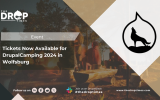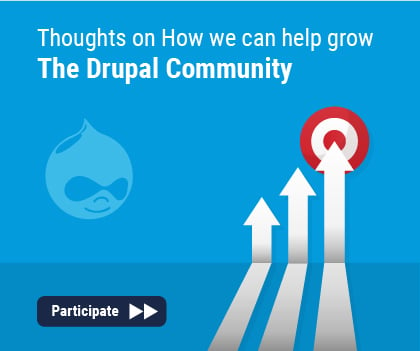Drupal Planet
What Is Drupal?

If you design, develop, or manage websites or create digital content, you've probably asked yourself at some point: what is Drupal? After all, this name pops up constantly in discussions with developers, content editors, and other professionals in the digital industry.
In this article, we'll look at some of the basic facts about Drupal: its main features, benefits, uses, and terminology.
Drupal as a Digital Experience Platform
Drupal at its core is a content management system (CMS), meaning that it gives you the tools to structure and manage your content. It also allows you to build flexible content publishing workflows and all kinds of dynamic features around that content. For organizations that are looking to transform and expand their digital presence, Drupal also acts as the central component of your digital experience platform (DXP). This means that you can integrate it with payment gateways, CRMs, analytics tools, social media, and marketing automation platforms.
The take-away is that Drupal really shines for projects where you want to combine high-quality content with a full range of features and marketing tools. And there are many ways to prioritize content strategy when you use Drupal as a DXP.
📖 A beginner's guide to Drupal: Download our ebook and get started with your next DxP!
Why Use Drupal?
When you think about it, most websites share a common set of features. They typically have navigation menus and lists of content, content pages with nice URLs, a logo in the header, a footer with contact info, the ability to search content, etc. At the same time, each website has some components that make it unique. Websites often have their own custom information architecture, a unique set of content, a particular visual design, and sometimes customized features.
Drupal is perfect for both the default features and the customized ones. It provides you with the most common functionalities any website needs but is also flexible enough to allow you to create a unique, customized experience. Here are some of Drupal's key benefits:
- Flexible, easy-to-use content authoring tools
- "Create once, publish anywhere" approach to content management
- Highly customizable features
- Powerful API-first architecture
- Numerous, freely available modules (add-on functionality)
- Constant innovation powered by a massive, engaged community
To accomplish that, Drupal provides numerous out-of-the-box features. The more you can learn about how Drupal works, the more you'll be able to leverage its full range of features:
- WYSIWYG authoring and editing tool that allows editors and admins to easily search for, draft, edit, preview, archive, publish, and update content
- Layout Builder - A powerful no-code solution to easily build engaging pages with templated layouts and drag-and-drop UI for placing content on the page
- Customizable workflows and approvals, as well as revisions, so that you can track every content update and revert to a previous version
- Media supports local audio, video, images, files, as well as remote content from YouTube, Vimeo, Twitter, etc.
- Media Library allows users to add existing media assets to a site as well as upload new items directly into the library
- Performance-optimized caching mechanisms
- Theme system enables you to create a completely custom, responsive front-end according to brand guidelines and using your framework of choice
- Recommended add-on (contrib) modules
- Easy-to-use form builder to create anything from a simple contact form or survey to complex, multi-step application forms
- Schedule when your content is published in advance
- Customizable, user-friendly URLs and configurable metatags for every piece of content
- Robust search experience and integration with enterprise-grade search engines (Elasticsearch or Solr)
- Migrate system allows you to feed data into Drupal
- Multilingual content & user interface
- Accessibility compliance (WCAG AA)
What Is Drupal Used For?
So now you can answer the question "what is Drupal?" But you might be wondering, given its flexibility, what types of projects is Drupal typically used for. All these out-of-the-box features make Drupal a favourite for large, complex websites. And the fact that Drupal is open source makes it the platform of choice of many universities and colleges, government agencies, healthcare institutions, and non-profits.
The reason that so many large organizations select Drupal is that it has one main advantage over other content management platforms: flexibility. While most other CMSs focus on serving specific use cases, Drupal has evolved to accommodate almost any use case that involves digital content.
Drupal powers a wide range of digital experiences, including:
- Corporate and institutional websites - Distributed publishing workflows, corporate branding
- Intranets - Private content, custom workflows for internal processes, listings of internal content, single-sign-on
- Online directories - Advanced search interfaces, related content listings, integrations with third-party content
- Interactive websites - Features for logged-in users, multi-step forms, content personalization, custom JavaScript to create dynamic interfaces like maps and visualizations, decoupled front-ends
- Marketing portals - Landing pages that drive SEO and user experience, integrations with marketing automation tools, taxonomy and metadata management
A Quick Drupal Glossary
When you do your research trying to make sense of how Drupal works, you'll come across some terms that might seem peculiar. Don't worry; you'll get used to Drupal terminology in no time. For now, here are some terms you can learn right away:
- Node - A template for a specific type of node (blog post, event listing, landing page, etc.) Usually, each content type has a set of fields that authors use to create it. A piece of content. Usually, every node has a unique URL.
- Content type - A template for a specific node type (blog post, event listing, landing page, etc.) Typically, each content type has a set of fields that authors use to create it.
- Taxonomy - Vocabularies and terms used to organize your content. For example, this allows you to tag and categorize blog posts or news items.
- View - A list of content (a simple news list or a more exciting list like a map or a calendar)
- Module - Code that you can add to your Drupal website to enable new functionality
- Theme - Defines the layout and design of the user interface
- Block - Container for displaying anything on a page (the search form, the logo, the copyright notice in the footer)
- Permission - A task that a user can do (e.g. viewing content, posting a comment, editing an event)
- Role - A type of user (e.g. author, editor, or member)
- Drupal core - The out-of-the-box features and functionality that Drupal provides
- Contrib module - Add-on functionality, made available by the Drupal community
- Custom module - Add-on functionality, built in-house to address the need for a specific project (e.g. a module that integrates with a custom CRM)
Some Fun Facts About Drupal
- Dries Buytaert created Drupal in 2001, which makes it one of the first open source CMSs ever created.
- The word Drupal comes from druppel, which means "drop" in Dutch. It was picked after Dries tried to register the domain "dorp.org." (Dorp means "village" in Dutch.) He mistyped it as "drop.org," and the mistake stuck.
- Drupal's logo is a stylized drop. The Drupal community also widely uses the Druplicon, a cartoon-like drop that is, in the spirit of open source, adopted by local communities around the world.
- Drupal's most recent version is Drupal 9, released in June 2020. Drupal 10 is scheduled to be released in June 2022.
- As of February 2022, 1.3 million people are using Drupal, including developers, designers, content writers, sponsors etc.
- And what language is Drupal written in? It's PHP, the programming language that powers nearly 80% of all websites. The latest version of Drupal uses modern, object-oriented code techniques and takes advantage of the Symfony framework.
- More than 120,000 users contribute to the Drupal community, resulting in more than 46,800 free modules available and over 1,000 commits per week.
- There are over 1 million Drupal-based websites out there.
- Drupal is one of the most popular CMSs among higher education institutions. Also, the larger the school, the more likely it is to use Drupal: it's the most popular CMS for universities and colleges with more than 6,400 students.
Digging Deeper Into Drupal
Now that we have covered the basics of what Drupal is, you can dig a little bit deeper and see how it can change the game for your digital experiences. Below you'll find some links with details about Drupal and what you can accomplish with it. Also, check our upcoming Drupal training courses to learn more about it!
- Download our free ebook and learn how to get started with Drupal
- Webinar: Build Accessible Websites Out-of-the-Box with Drupal
- Video: 5 Keys to Success for Using Drupal in Higher Ed
- How Drupal Fits Into the Landscape of Digital Experience Platforms
- Ebook: Building Business-Friendly Intranets with Drupal
- Building a More Inclusive Drupal Website: Your Accessibility Guide
- Your Drupal 9 Migration: Agency or In-House?
Want to learn more about the benefits
of moving to Drupal? Get in touch!
+ more awesome articles by Evolving Web






